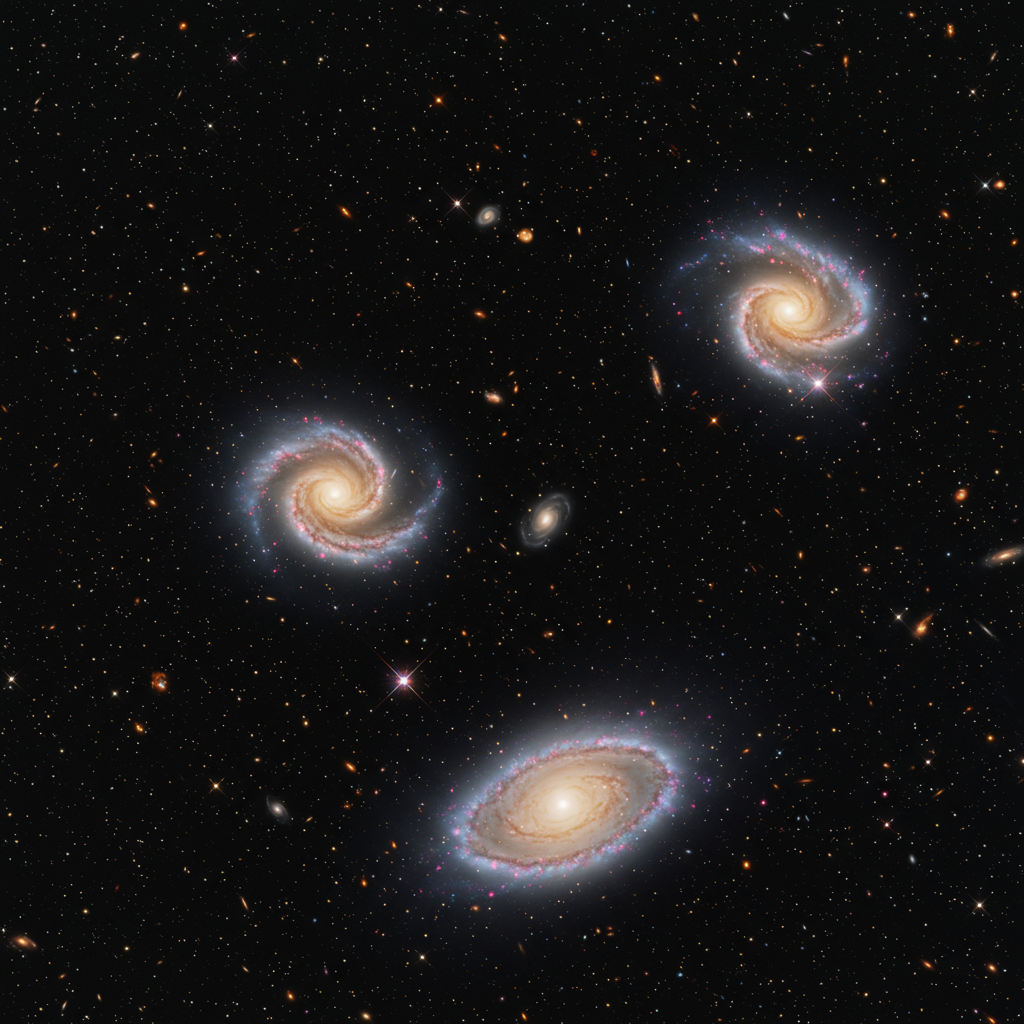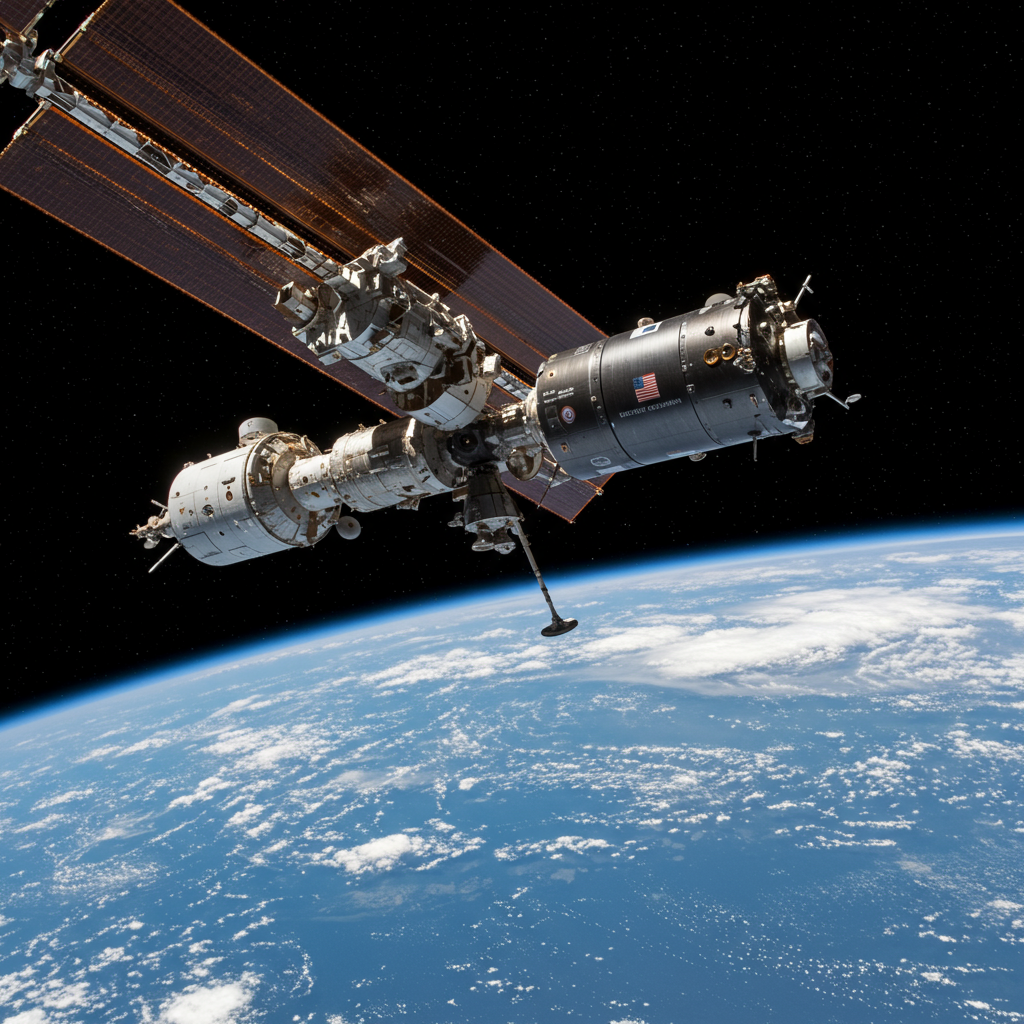Have you ever looked up at the night sky and wondered how those majestic, swirling pinwheels of stars came to be? Our universe is filled with billions of galaxies, many of which are flattened disks like our own Milky Way. These often feature a distinctive structure: a puffier “thick” disk and a flatter, more tightly packed “thin” disk of stars nestled within. Scientists have long debated how and why this two-part design forms. Now, thanks to the extraordinary power of NASA’s James Webb Space Telescope, astronomers are closer than ever to unlocking the secrets of disk galaxy formation.
Unveiling Galactic Architecture with Webb
To probe the deep past of these cosmic structures, a team of astronomers meticulously analyzed vast amounts of archival data from Webb. They focused on a specific sample: 111 disk galaxies seen edge-on from our perspective. Viewing galaxies this way is crucial. It allows researchers to clearly distinguish and measure the vertical height of their stellar disks.
This carefully selected sample spanned immense cosmic distances, looking back in time up to 11 billion years ago. For context, this is roughly 2.8 billion years after the Big Bang itself. Studying galaxies across such a significant chunk of cosmic history is a monumental task. It helps bridge the gap between astronomers who study the very early universe and “galactic archaeologists” who investigate the history of nearby galaxies, including our own Milky Way.
Prior to Webb, studying the faint, older stars that populate the thick disks of distant galaxies was incredibly challenging. The brighter, younger stars in the thin disk tended to overpower the signal. Furthermore, the gas and dust prevalent in early galaxies often obscured views. Webb’s unparalleled resolution and its ability to see through dust using infrared light were essential. These capabilities allowed the team to identify and measure the distinct thick and thin disk components separately, even in distant, ancient galaxies.
The Formation Timeline: Thick Before Thin
By examining this unique sample of 111 edge-on galaxies across cosmological time, the researchers could track the evolution of their structure. They studied galaxies that appeared to have only a single disk and those that clearly showed both a thick and a thin component. The core finding from their analysis was significant and provides a fundamental piece of the galaxy formation puzzle.
Their results strongly indicate that galaxies first form their thick disk. The subsequent formation of the thin disk occurs later. This isn’t a one-size-fits-all process across the cosmos, however. The study revealed that the timing of this transition from a single, thick disk to a galaxy hosting both a thick and thin disk is highly dependent on the galaxy’s mass.
High-mass galaxies appear to have made this transition relatively early in the universe’s history. The data suggests they settled into having two distinct disks around 8 billion years ago. In contrast, lower-mass galaxies took much longer to develop their embedded thin disks. For these smaller systems, the transition occurred later, roughly 4 billion years ago. Seeing clear evidence of thin stellar disks already in place as early as 8 billion years ago was particularly surprising to the research team.
Turbulent Gas Disks: The Driving Force
To understand why this mass-dependent transition occurs, the scientists looked beyond just the stellar disks. They incorporated data showing the motion of gas within galaxies from other observatories, such as the Atacama Large Millimeter/submillimeter Array (ALMA), alongside ground-based surveys. This allowed them to consider the physical processes happening within the forming galaxies.
Their findings align well with one of the leading theoretical models for disk galaxy formation: the “turbulent gas disk” scenario. This hypothesis suggests that in the early universe, galaxies began as turbulent disks of gas. This turbulence fueled intense bursts of star formation, leading to the creation of the thicker stellar disk. As stars continued to form from the gas, the gas disk gradually became more stable and less turbulent over time.
A less turbulent gas disk is naturally thinner. This stabilization allowed for the formation of the flatter, embedded thin stellar disk. The model explains the mass dependence because more massive galaxies are generally more efficient at converting their gas into stars. This higher efficiency means they use up and stabilize their turbulent gas disks faster than their lower-mass counterparts. Consequently, the thin disks in massive galaxies formed earlier. The study also notes that the thick disk doesn’t stop growing once the thin disk appears; it continues to develop, though at a slower pace than the newer thin disk.
Implications for Our Milky Way Galaxy
This groundbreaking research holds significant implications for understanding the history of our cosmic home, the Milky Way. Webb’s incredible sensitivity is allowing astronomers to observe smaller and fainter galaxies in the early universe. Many of these distant, dimmer galaxies are considered potential analogs or “progenitors” of galaxies like our Milky Way. They offer a direct look at the kinds of systems that likely evolved into spiral galaxies like ours.
The observed period when galaxies transition from a single thick disk to hosting both a thick and thin disk roughly coincides with the estimated time when the Milky Way’s own thin disk is thought to have formed. By studying these Milky Way-like progenitors with Webb in unprecedented detail, astronomers can gain crucial insights into the specific processes and timeline that shaped our galaxy into what it is today. This study is a key step in using distant cosmic history to understand our local galactic environment.
Looking Ahead: Expanding the Research
While this study provides a crucial framework for understanding the structural evolution of disk galaxies, the research team emphasizes that there is much more to explore. This initial work primarily focused on the physical structure and timing of disk formation.
For future studies, the team intends to incorporate additional data points that are typically available for nearby, well-studied galaxies. This includes information about the motion of stars within the disks, their ages, and their metallicity (the abundance of elements heavier than hydrogen and helium). Adding these details will enrich their analysis considerably. By combining the structural information gleaned from distant galaxies with detailed properties from nearby ones, scientists can build a more complete and refined picture of how disk galaxies assemble and evolve throughout cosmic time. This integrated approach promises to further bridge our understanding of galaxies across billions of light-years.
Frequently Asked Questions
What are the thick and thin disks in spiral galaxies?
Most present-day spiral galaxies, including our Milky Way, have two main stellar disk components. The thick disk is a puffier, more diffuse distribution of older stars extending vertically above and below the galactic plane. The thin disk is a much flatter, more concentrated layer of younger stars, gas, and dust embedded within the thick disk. The Milky Way’s thick disk is about 3,000 light-years high, while its thin disk is only about 1,000 light-years thick.
How did Webb’s observations change our understanding of disk formation?
Using James Webb Space Telescope data, astronomers studied 111 edge-on galaxies across 11 billion years of cosmic history. This allowed them to see distinct thick and thin disks even in very distant, early galaxies, something difficult before Webb. The key finding is that thick disks form first, followed by thin disks. Crucially, the timing of thin disk formation depends on galaxy mass, happening earlier in more massive galaxies (around 8 billion years ago) and later in lower-mass ones (around 4 billion years ago).
Does this study help explain the Milky Way’s structure?
Yes, this research is highly relevant to understanding the Milky Way. Webb can observe galaxies similar to our own (“progenitors”) in the early universe. The transition period from a single thick disk to a double-disk structure observed in this study roughly matches the estimated time the Milky Way’s thin disk formed. Future Webb observations of Milky Way-like galaxies will provide even more specific details about our galaxy’s unique formation history.
The James Webb Space Telescope continues to revolutionize our understanding of the universe. By digging deep into the structural origins of disk galaxies, this research provides crucial insights into how these fundamental cosmic structures formed and evolved over billions of years, ultimately leading to galaxies like our own. This study underscores Webb’s unique capability to peer back in time and illuminate the processes that shaped the cosmos we see today.




